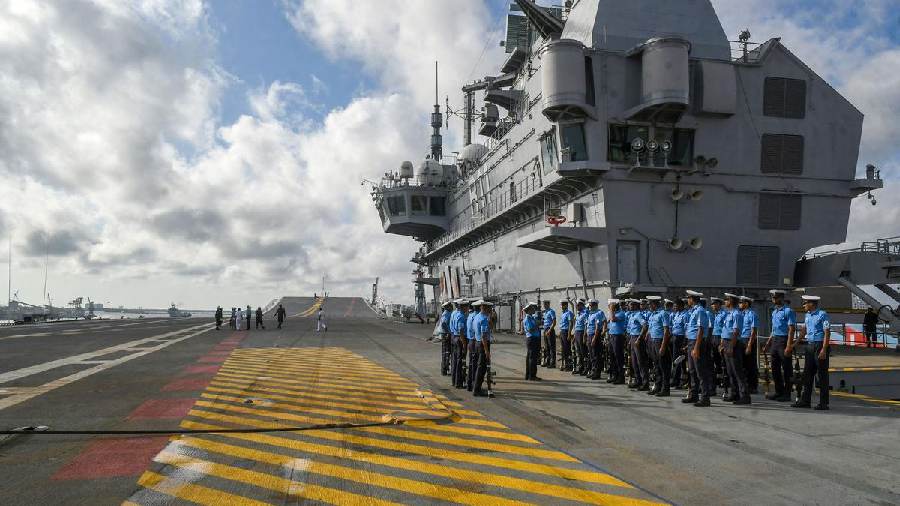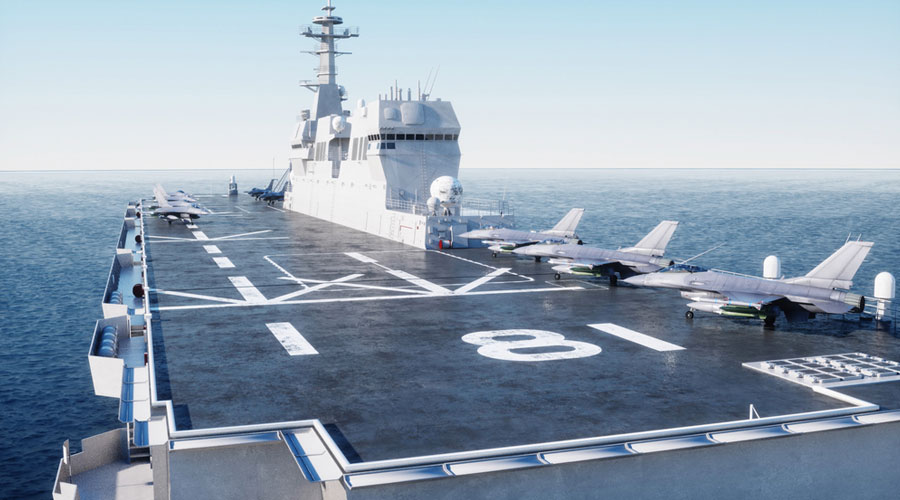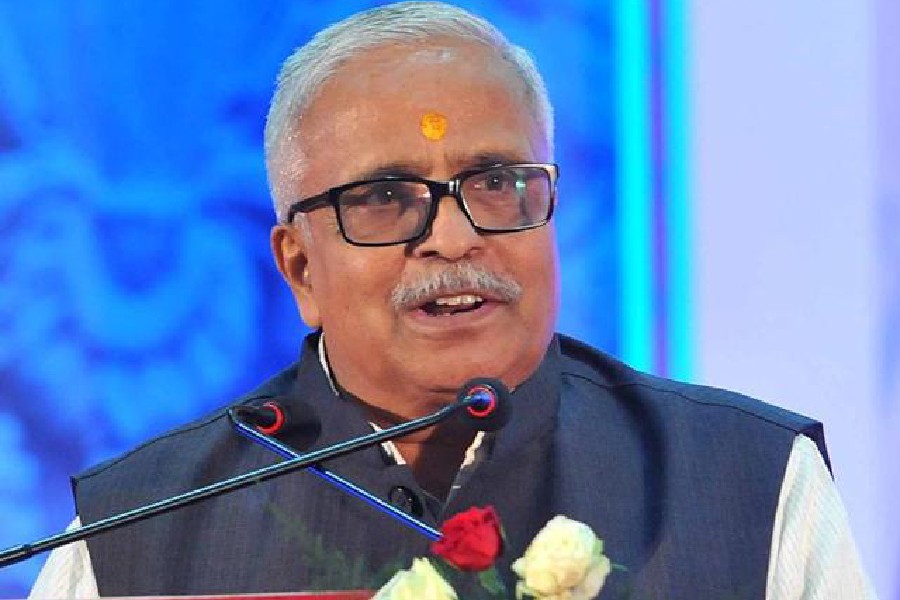India's first indigenously-built aircraft carrier INS Vikrant will be able to play a role in ensuring peace and stability in the Indo-Pacific region, Vice Chief of Indian Navy Vice Admiral S N Ghormade said on Thursday, ahead of the warship's commissioning on September 2.
He said the aircraft landing trials on board INS Vikrant will begin in November and they will be completed by mid-2023, adding MiG-29K jets will operate from the warship for the first few years.
At a press briefing, Vice Admiral Ghormade said the commissioning of INS Vikrant in Kochi on September 2 in the presence of Prime Minister Narendra Modi will not only make India enter an elite group of nations capable of manufacturing aircraft carriers above 40,000 tonnes category but will also reflect the country's unity and diversity.
The vice chief said equipment for the aircraft carrier has been manufactured in 18 states and union territories including places such as Kolkata, Jalandhar, Kota, Pune, Delhi, Ambala, Hyderabad and Indore.
"It will be an unforgettable day for India. It will reflect India's growing prowess in defence manufacturing," he said.
Vice Admiral Ghormade said India now has an eco-system to build the next aircraft carrier and noted that deliberations are underway for it.
The Navy has been pitching for three aircraft carriers to deal with China's growing naval prowess and its growing influence over the Indian Ocean region. At present, India has only one aircraft carrier -- INS Vikramaditya -- which is a Russian origin platform.
Explaining the scheduled launch of trials of aircraft landing on board INS Vikrant from November, Vice Admiral Ghormade such an exercise after commissioning of an aircraft carrier is a normal practice in all advanced nations.
"We hope to complete it by the middle of next year and we will put in all efforts so that the aircraft carrier is operationally ready with the aircraft. The aircraft which are available with us are MiG-29Ks," he said.
The Navy is in the process of procuring 26 deck-based aircraft and it has narrowed down on Boeing's F/A-18 Super Hornet and French aerospace major Dassault Aviation's Rafale M aircraft.
Vice Admiral Ghormade said the Navy is currently undertaking a comprehensive evaluation process of two aircraft, but added the procurement would be for an interim period as the government is looking at an indigenously developed deck-based jet for the aircraft carrier.
Asked whether the commissioning of the INS Vikrant will help India in protecting its maritime interests more vigorously in the region in the backdrop of China's attempts to increase its maritime influence in countries like Sri Lanka and the Maldives, he said the warship will provide required deterrence.
"Commissioning of the aircraft carrier will provide the required deterrence considering the growing strength of our neighbours and to enhance our maritime capability. Therefore, it (commissioning of INS Vikrant) is going to be a very big event for us," the vice chief said.
Vice Admiral Ghormade said the aircraft carrier would be able to play a role in ensuring peace and stability in the Indo-Pacific region.
With the construction of 'Vikrant', India has joined a select group of nations such as the US, the UK, Russia, China and France, having the niche capability to indigenously design and build an aircraft carrier.
The INS Vikrant has over 2,300 compartments, designed for a crew of around 1,700 people, including specialised cabins to accommodate women officers.
Vikrant has a top speed of around 28 knots and a cruising speed of 18 knots with an endurance of about 7,500 nautical miles.
The warship is 262 metres long, 62 metres wide and it has a height of 59 metres. Its construction began in 2009.
The Navy said the ship is powered by four gas turbines totalling 88 MW power.
The project has been implemented under the three phases of contract between the ministry of defence and Cochin Shipyard Ltd, beginning May 2007.
The ship's keel was laid in February 2009.












